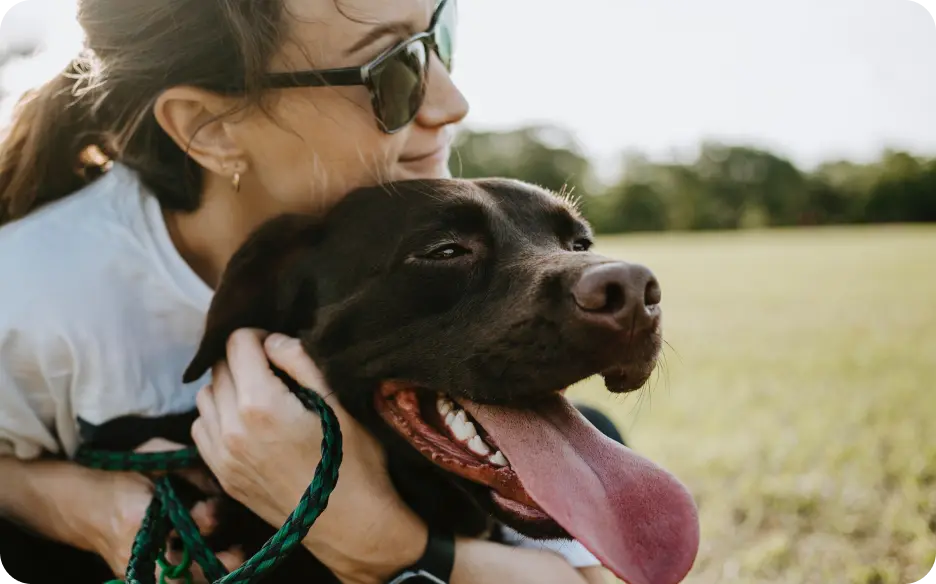Why Do Dogs Lick Each Others Mouths?
Post Date:
December 10, 2024
(Date Last Modified: December 10, 2024)
When observing canine interactions, the sight of dogs licking each other’s mouths can raise eyebrows. This behavior may appear baffling to humans, yet it carries significant meaning within the canine social structure.
Reinforcing Social Bonds
Dogs are inherently social creatures, and their behaviors often stem from instinctual drives. One primary reason for mouth licking is the reinforcement of social bonds. In a natural setting, dogs live in packs, relying on one another for companionship and protection. Licking serves as a gesture of affection, much like a hug or kiss among humans. Through this act, dogs communicate trust and comfort with each other.
Hierarchical Dynamics
The history of dogs as pack animals further explains this behavior. In the wild, mouth licking can signify submission or respect toward higher-ranking pack members. Puppies often lick the mouths of adult dogs, soliciting food, as adult dogs may regurgitate meals for their young. This behavior is crucial for puppies to learn their place within the social hierarchy, as licking reinforces bonds and demonstrates submission.
Gathering Information
Beyond social bonding, licking serves a practical purpose. Dogs possess an extraordinary sense of smell and taste, allowing them to gather vital information about one another through licking. This act helps dogs assess each other’s health, diet, and emotional states. Scent plays a pivotal role in canine communication, and licking provides insight into whether a dog feels stressed, unwell, or content.
Playful Interactions
Mouth licking often emerges during playtime, reflecting dogs’ playful nature. This behavior can serve as an invitation for further engagement, signaling that the interaction is friendly. During play, licking reassures the other dog that there is no threat, enhancing their enjoyment of the interaction.
Monitoring Excessive Licking
While licking is typically a normal behavior, excessive licking may indicate underlying issues. If a dog licks another dog’s mouth excessively, it could signal anxiety, stress, or medical concerns. Dogs are sensitive to each other’s emotions; one anxious dog may elicit comforting licking from another. Observing these interactions is vital for determining whether the behavior is healthy or requires intervention.
Respecting Boundaries
Not all dogs appreciate mouth licking. Some may find it uncomfortable or intrusive, potentially leading to conflict. Owners should be attuned to their pets’ body language during interactions. Signs of discomfort, such as growling or attempts to move away, indicate that a dog may not welcome the licking. Recognizing dogs’ preferences and boundaries fosters healthier relationships.
Gender Dynamics in Playgroups
In mixed-gender playgroups, licking can become more pronounced. Female dogs may lick males as a form of social interaction, while males may reciprocate. This dynamic fosters rapport and mutual respect, influenced by individual personalities, age, and breed.
Breed Differences
Different breeds exhibit varying tendencies regarding licking behavior. Some breeds, like golden retrievers and beagles, are naturally more social and affectionate, often engaging in licking during play. In contrast, independent breeds, such as Shiba Inus, may not display this behavior as frequently.
Environment Matters
A familiar environment, such as home or a yard, often encourages licking. In contrast, new or stressful settings may inhibit this behavior. Dogs take cues from their surroundings and peers; a calm atmosphere promotes positive interactions, while a tense environment may suppress social behaviors.
The Role of Training and Socialization
Training and socialization are crucial in shaping a dog’s behavior. Properly socialized dogs are more likely to engage in positive licking behaviors, learning appropriate ways to interact. In contrast, dogs lacking socialization may struggle to interpret peers’ cues, leading to misunderstandings.
Early Experiences Shape Behavior
Early exposure to various environments, people, and other dogs helps puppies develop into well-adjusted adults. This exposure encourages appropriate behaviors, including licking, as a means of communication and bonding.
Health Monitoring
While licking is often benign, monitoring a dog’s health is essential. Excessive licking may indicate underlying medical issues, such as allergies or dental problems. If a dog displays unusual licking behavior, consulting a veterinarian is advisable.
Appreciating Canine Communication
The act of dogs licking each other’s mouths is a complex form of communication that encompasses affection, hierarchy, and information gathering. Observing and respecting these interactions nurtures a positive environment that supports healthy relationships among pets.
Fostering a Positive Environment
Creating a space conducive to healthy social interactions is vital for dog owners. Opportunities for socialization, whether through playdates or visits to dog parks, enhance dogs’ communication skills. Being observant in these settings provides valuable insights into social dynamics. Addressing any signs of discomfort or aggression ensures that all dogs feel safe and respected.
Understanding these behaviors not only strengthens the bond between pets and their owners but also enriches dogs’ lives as they navigate their social world. Engaging with dogs through play and interaction fosters their happiness and well-being, allowing them to thrive in their environments.






